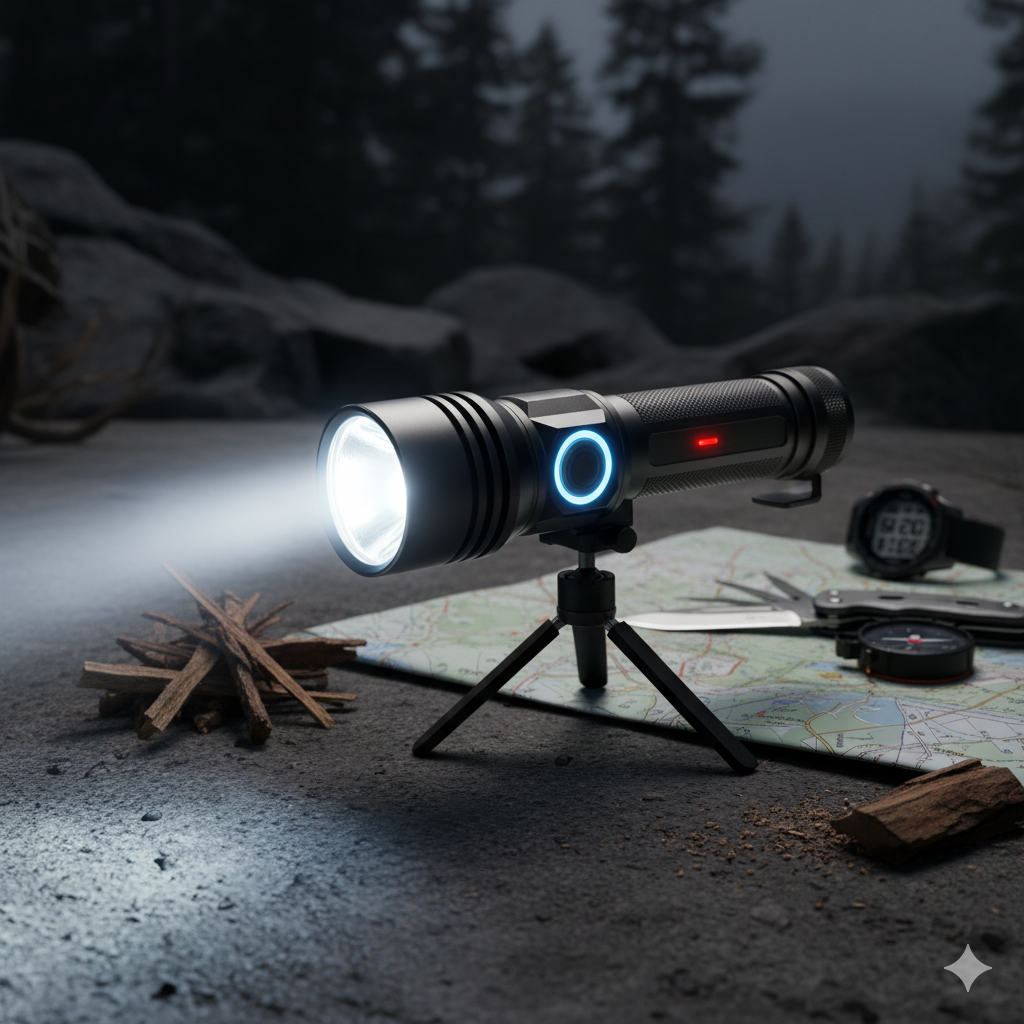Flashlight Beam Distance Explained: Everyday Carry (EDC) vs. Outdoor Gear
Posted by Raymond on 26th Oct 2025
When choosing a flashlight, one of the most misunderstood specifications is beam distance — how far the light can effectively illuminate. Whether you’re looking for an EDC flashlight for daily use or a high-powered outdoor flashlight for camping and search operations, understanding beam distance is essential for making the right choice.
In this guide, we’ll break down how beam distance is measured, compare EDC and outdoor models, and help you determine which one fits your lighting needs best.

What Is Flashlight Beam Distance?
Beam distance refers to the maximum distance at which a flashlight can project usable light, typically measured in meters. According to the ANSI/NEMA FL1 Standard, beam distance is the point where the light intensity falls to 0.25 lux—approximately the brightness of a full moon on a clear night.
? Learn more about ANSI FL1 standards at Wikipedia - ANSI flashlight standards
Beam distance is influenced by:
-
Lumen output (brightness)
-
Reflector design
-
Beam angle (spot vs. flood)
-
Battery voltage and runtime
EDC Flashlights vs. Outdoor Flashlights: Key Differences
| Feature | EDC Flashlight | Outdoor Flashlight |
|---|---|---|
| Typical Beam Distance | 50–150 meters | 200–1000+ meters |
| Light Output (Lumens) | 200–800 lumens | 1000–5000 lumens |
| Beam Type | Wider, short-range flood beam | Narrow, long-range spot beam |
| Size & Weight | Compact and lightweight | Larger with cooling fins or metal housing |
| Battery Type | Rechargeable (USB or Li-ion) | High-capacity rechargeable or replaceable cells |
| Primary Use | Everyday tasks, indoor, short trips | Camping, hiking, search & rescue, tactical use |
| Example Models | Tank007 TK series, Olight i5R | Tank007 WK1, Fenix TK22, Nitecore P23i |
How Beam Distance Affects Real-World Use
1. Everyday Carry (EDC)
For daily use, such as finding items at night, walking your dog, or checking around the house, an EDC flashlight with 100–200 meters of beam distance is more than enough. The goal here is convenience and portability, not extreme brightness.
Best choice:
Compact models like the TANK007 E09 or Olight S1R Baton II are perfect for pocket carry.
2. Outdoor & Tactical Applications
Outdoor flashlights are built for maximum visibility and distance. They use high-intensity LEDs and precision reflectors that can reach 500 meters or more, ideal for:
-
Search and rescue
-
Hiking or mountain navigation
-
Law enforcement or security
Example:
The TANK007 WK1 features an adjustable head and powerful beam suitable for outdoor professionals.
(? See product: https://www.tank007store.com/)
Factors That Influence Beam Distance Performance
-
Lens & Reflector Shape:
A deep, smooth reflector focuses light farther, while textured reflectors spread it for close range. -
LED Type & Efficiency:
High-quality emitters like Cree XHP70.3 offer superior throw and brightness. -
Battery Output:
Stronger, higher-capacity batteries maintain brightness longer and extend range. -
Weather Conditions:
Fog, rain, or dust can reduce effective beam distance by scattering light.
Choosing the Right Flashlight for Your Needs
| Usage Scenario | Recommended Beam Distance | Suggested Model Type |
|---|---|---|
| Indoor / Home | 50–100m | Compact EDC |
| Camping / Hiking | 200–400m | Outdoor mid-range |
| Search & Rescue | 500m+ | Tactical spotlight |
| Urban Patrol / Security | 300–600m | Long-throw rechargeable |
If you want a reliable flashlight that performs in both daily and outdoor conditions, look for hybrid models offering adjustable focus and rechargeable batteries—balancing power and convenience.
Conclusion
The ideal flashlight depends on your use case.
-
Choose an EDC flashlight for convenience and quick access.
-
Opt for an outdoor flashlight when beam distance and durability are top priorities.
Understanding beam distance helps ensure you’re never under- or over-equipped for your environment.
